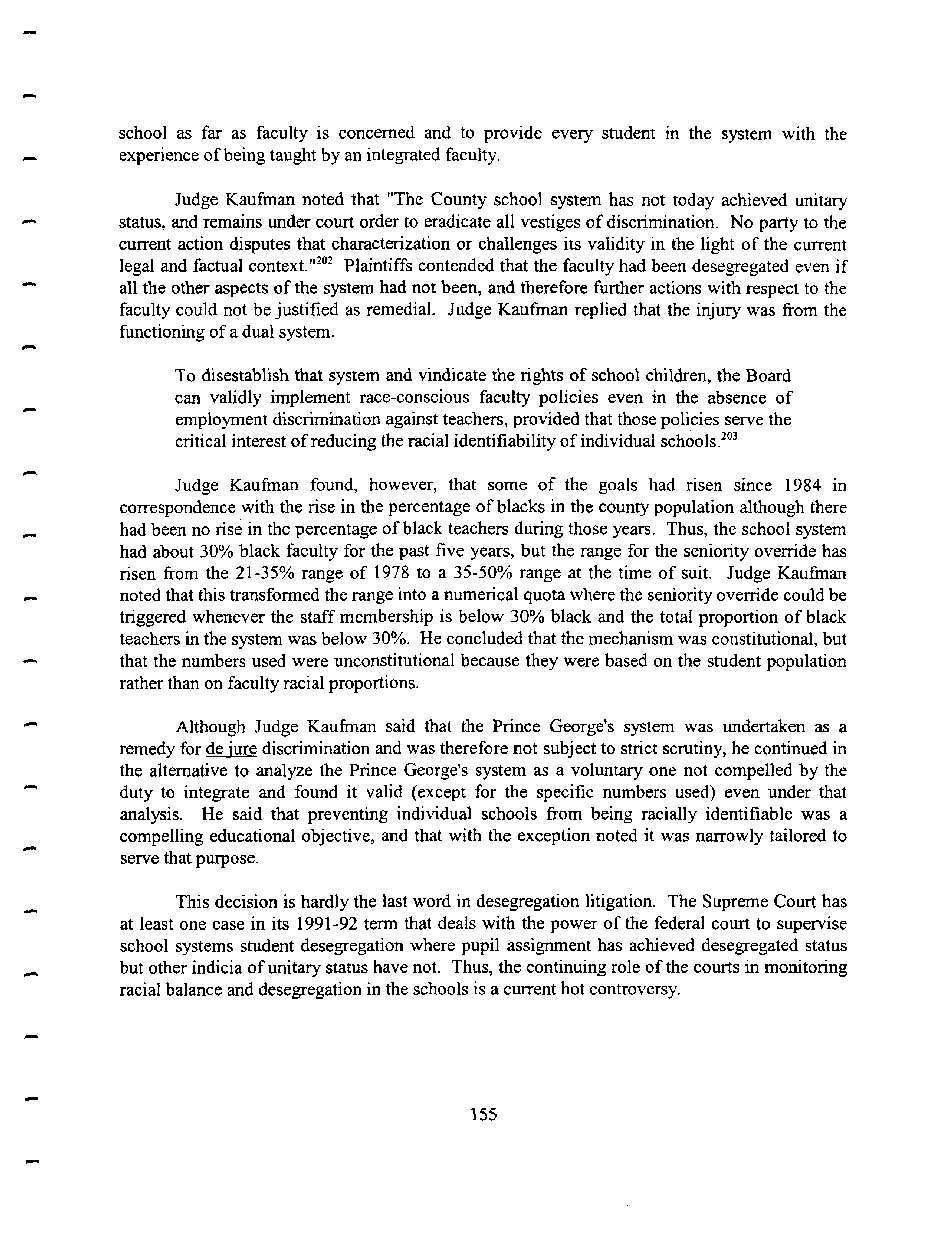|
school as far as faculty is concerned and to provide every student in the system with the
experience of being taught by an integrated faculty.
Judge Kaufman noted that "The County school system has not today achieved unitary
status, and remains under court order to eradicate all vestiges of discrimination. No party to the
current action disputes that characterization or challenges its validity in the light of the current
legal and factual context."202 Plaintiffs contended that the faculty had been desegregated even if
all the other aspects of the system had not been, and therefore further actions with respect to the
faculty could not be justified as remedial. Judge Kaufman replied that the injury was from the
functioning of a dual system.
To disestablish that system and vindicate the rights of school children, the Board
can validly implement race-conscious faculty policies even in the absence of
employment discrimination against teachers, provided that those policies serve the
critical interest of reducing the racial identifiability of individual schools.203
Judge Kaufman found, however, that some of the goals had risen since 1984 in
correspondence with the rise in the percentage of blacks in the county population although there
had been no rise in the percentage of black teachers during those years. Thus, the school system
had about 30% black faculty for the past five years, but the range for the seniority override has
risen from the 21-35% range of 1978 to a 35-50% range at the time of suit. Judge Kaufman
noted that this transformed the range into a numerical quota where the seniority override could be
triggered whenever the staff membership is below 30% black and the total proportion of black
teachers in the system was below 30%. He concluded that the mechanism was constitutional, but
that the numbers used were unconstitutional because they were based on the student population
rather than on faculty racial proportions.
Although Judge Kaufrnan said that the Prince George's system was undertaken as a
remedy for de jure discrimination and was therefore not subject to strict scrutiny, he continued in
the alternative to analyze the Prince George's system as a voluntary one not compelled by the
duty to integrate and found it valid (except for the specific numbers used) even under that
analysis. He said that preventing individual schools from being racially identifiable was a
compelling educational objective, and that with the exception noted it was narrowly tailored to
serve that purpose.
This decision is hardly the last word in desegregation litigation. The Supreme Court has
at least one case in its 1991-92 term that deals with the power of the federal court to supervise
school systems student desegregation where pupil assignment has achieved desegregated status
but other indicia of unitary status have not. Thus, the continuing role of the courts in monitoring
racial balance and desegregation in the schools is a current hot controversy.
155
�
|

